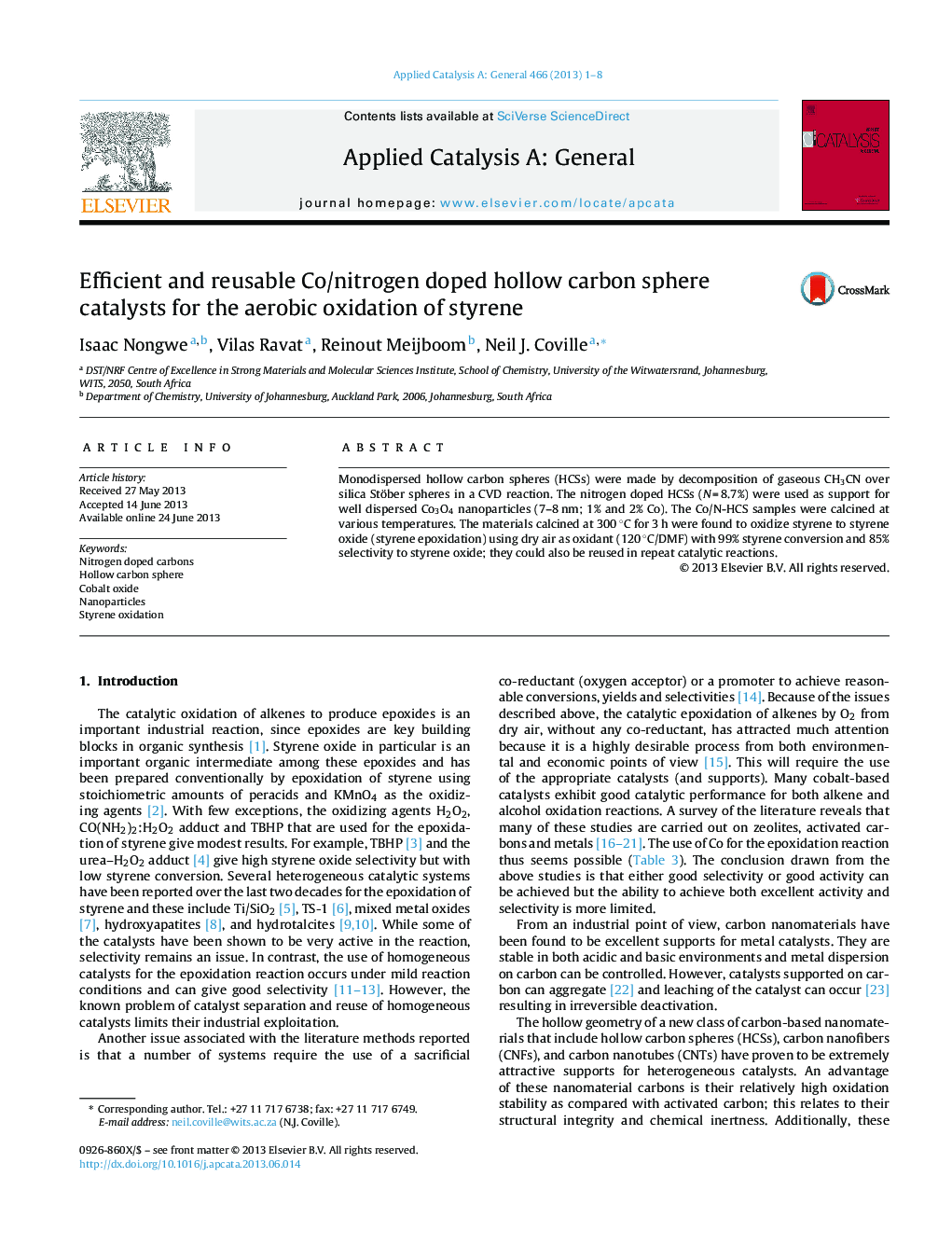| Article ID | Journal | Published Year | Pages | File Type |
|---|---|---|---|---|
| 40284 | Applied Catalysis A: General | 2013 | 8 Pages |
•HCSs were modified by doping with N to form N-HCSs by using a CVD method.•N-HCSs showed better thermal stability.•Co showed better homogeneous dispersion on the surface of N-HCSs than on HCSs.•Co is the active phase in the Co deposited catalysts.•Co/N-HCS is a selective, highly efficient and recyclable catalyst for the oxidation of styrene.
Monodispersed hollow carbon spheres (HCSs) were made by decomposition of gaseous CH3CN over silica Stöber spheres in a CVD reaction. The nitrogen doped HCSs (N = 8.7%) were used as support for well dispersed Co3O4 nanoparticles (7–8 nm; 1% and 2% Co). The Co/N-HCS samples were calcined at various temperatures. The materials calcined at 300 °C for 3 h were found to oxidize styrene to styrene oxide (styrene epoxidation) using dry air as oxidant (120 °C/DMF) with 99% styrene conversion and 85% selectivity to styrene oxide; they could also be reused in repeat catalytic reactions.
Graphical abstractFigure optionsDownload full-size imageDownload high-quality image (157 K)Download as PowerPoint slide
